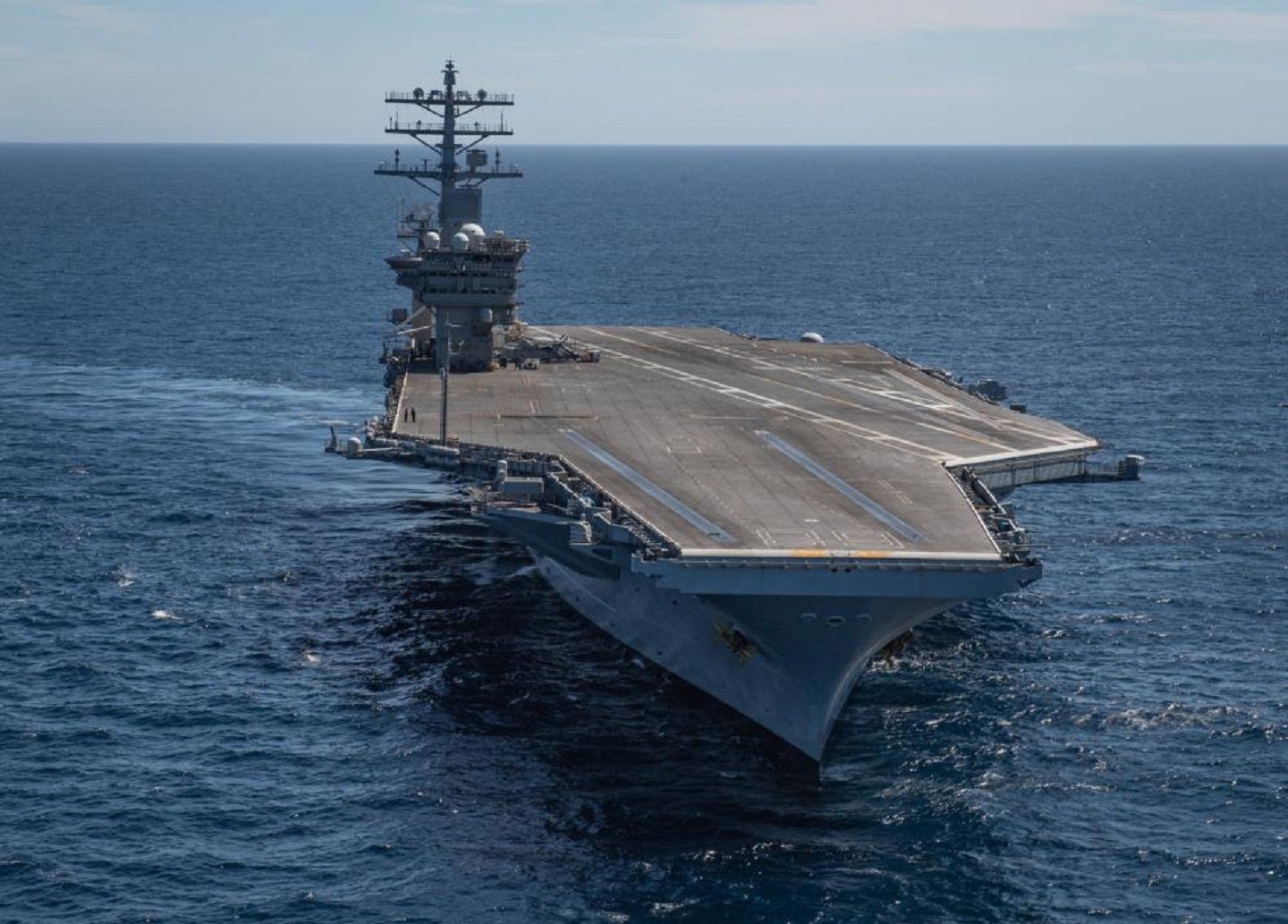
The Japanese Maritime Self-Defence Force’s (JMSDF) Hyuga-class destroyer (DDG) has conducted a bilateral maritime exercise with the United States Navy’s (USN) Nimitz-class carrier strike group (NCST) to enhance interoperability between the two naval forces.
Carrier USS Nimitz and its accompanying DDGs USS Wayne E. Meyer and USS Decatur cooperated in anti-submarine drills, air defence exercises, helicopter cross deck landings, and integrated maritime fires training with JS Ise. JMSDF staff members embarked on Nimitz in support of integration and exercise execution the USN announced on 27 March.
Carrier Strike Group 11 commander Rear Adm. Christopher Sweeney said: “Our partners in the Japan Self-Defence Forces are incredibly important allies, and it is essential that we continue to integrate and train together to expand interoperability and strengthen our capabilities”.
“This alliance has never been stronger or more important as we remain resolute to fly, sail, and operate wherever international law allows.”
Taking place between 23 and 26 March, the maritime exercise follows a substantial history of bilateral measures taken to cooperate with the USN and deter their regional adversaries: the People’s Republic of China (PRC) and the Democratic People’s Republic of Korea (DPRK).
In January 2023, the US and Japanese governments devised a security of supply arrangement to increase joint collaboration efforts in emerging technology to improve defence capabilities. Additionally, on 23 February, US and Japanese forces conducted their annual Resilience Shield exercise, focused on ballistic missile defence and ensuring their proficiency in naval tactics, techniques, and procedures.
Interoperability
Kandlikar Venkatesh, analyst at GlobalData, offers his view: “The maritime drills with the Hyuga-class helicopter carrier will assist the JMSDF in preparing for the F-35B’s deployment onto such vessels, including the modified Izumo-class helicopter carrier, in the coming years.”
“From the JMSDF’s perspective, the bilateral exercises will enhance its maritime warfare capabilities and interoperability with partner navies such as the US Navy, which operates the largest fleet of F-35Bs worldwide.”
“These exercises are essential for Japan’s intentions to augment its naval prowess in the Indo-Pacific region amid threats from China and North Korea”.
Japan has reinforced its alliance with the US to modernise its defence capability to better meet the security challenges posed by the PRC and the DPRK. It has been prioritising space, cyberspace, and the electromagnetic spectrum to create a multidomain defence force.
Similarly, the President’s FY 2024 Budget expresses the need for the US to place greater focus on their weapons systems capabilities. This is signalled by the fact that the USN’s weapon systems budget has received an additional $2bn in the new budget. This is part of the US strategy in which it is committed to enhancing its research and development of emerging technologies to gain the competitive edge.
Coming together to integrate their military resources and platforms marks the start of the process in which the US and Japanese naval forces will realise this much-needed military advantage at sea.







